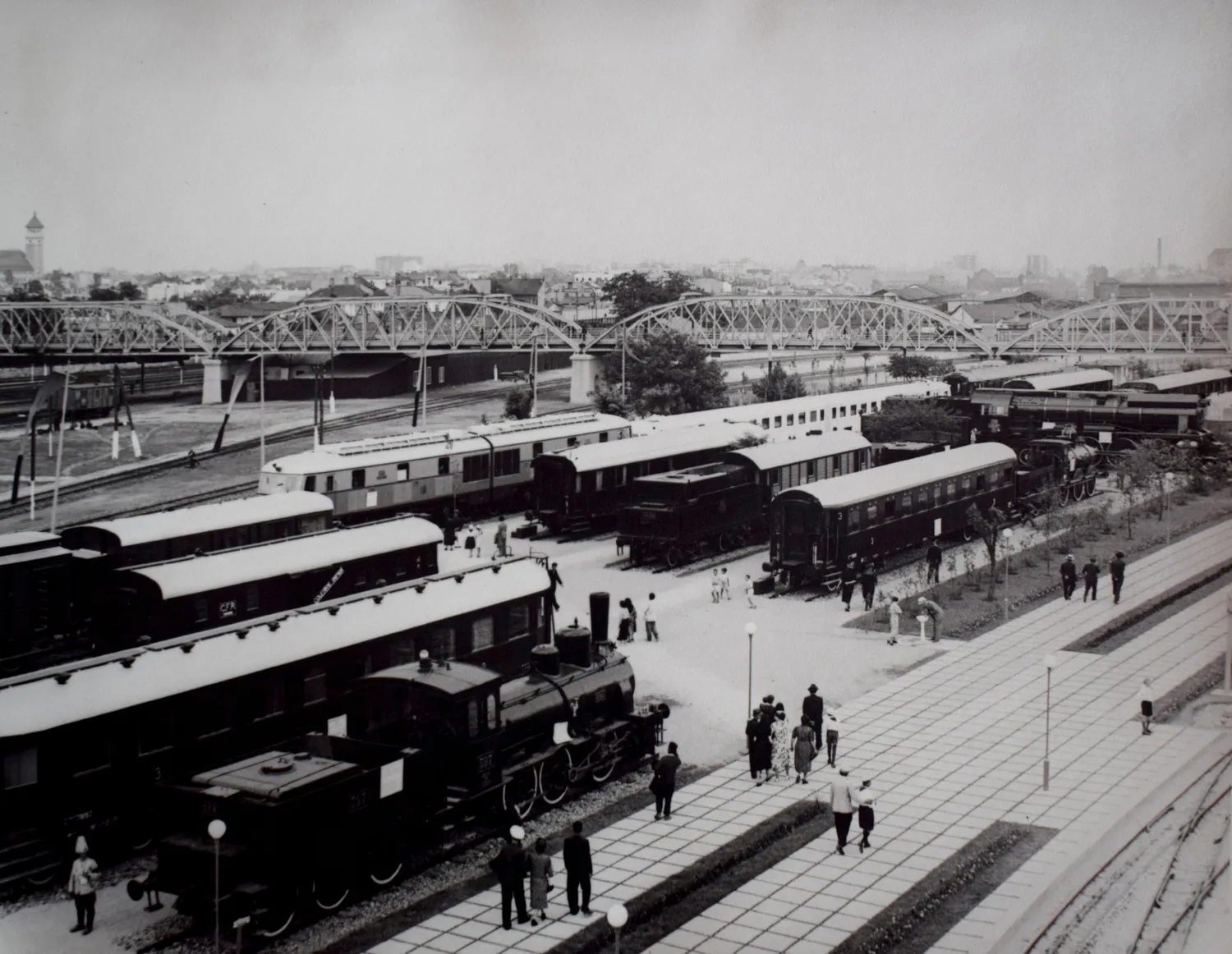WPZ S 1 - S 4
Also known as:
WPZ 628 - 631
Vehicle type:
Registration country:
Railway companies:
1930
These steam snowplows entered the CFR fleet in 1930. They were
built in Sweden by the company Nydqvist & Holm AB (NOHAB) in
Trollhättan, under order number 62105/1930, and were assigned the
operational numbers WPZ 628 - 631. After 1945,
they were renumbered as WPZ S 1 - S 4*.
The Swedish plows had the following technical specifications: wheel diameter of 830 mm, bogie wheelbase of 1650 mm, plow wheelbase of 5350 mm, length of 13130 mm, grate area of 2.7 m², heating surface area of 132.3 m², boiler pressure of 12 atm, cylinder diameter of 430 mm, piston stroke of 560 mm, power output of 700 HP, maximum crankshaft speed of 265 rpm, maximum propeller speed of 150 rpm, total service weight of 64 tf, and maximum axle load of 16 tf.
When towed, the plow’s maximum speed was 60 km/h, and during snow-clearing operations, the movement speed was limited to 10 km/h, depending on the snow layer’s height and density. In 1937, these plows were equipped with an installation for burning fuel oil.
In the 1970s, the Swedish plows were assigned to the following depots:
- WPZ S 1, coupled with tender WPZ S 1 (ex 301.001), stationed at the Bucharest Triaj depot,
- WPZ S 2, coupled with tender 231.092 at the Iasi depot,
- WPZ S 3, coupled with tender 231.091 at the Bucharest Triaj depot,
- WPZ S 4, coupled with tender WPZ S 4 (type 2’2’T 26, formerly DR 50) at the Craiova depot.
Of these, WPZ S 2 has been restored and is preserved at the Dej depot, while the others were scrapped in the mid-1990s, despite being in perfect condition (and even operational).
*The steam snowplow numbering system adopted post-1945 included an initial letter indicating the plow’s origin: A = American, S = Swedish, and G = German. Although the American plows were actually Austrian-built, they were so named because they were nearly identical to those produced by Cooke in Paterson in 1897.
The Swedish plows had the following technical specifications: wheel diameter of 830 mm, bogie wheelbase of 1650 mm, plow wheelbase of 5350 mm, length of 13130 mm, grate area of 2.7 m², heating surface area of 132.3 m², boiler pressure of 12 atm, cylinder diameter of 430 mm, piston stroke of 560 mm, power output of 700 HP, maximum crankshaft speed of 265 rpm, maximum propeller speed of 150 rpm, total service weight of 64 tf, and maximum axle load of 16 tf.
When towed, the plow’s maximum speed was 60 km/h, and during snow-clearing operations, the movement speed was limited to 10 km/h, depending on the snow layer’s height and density. In 1937, these plows were equipped with an installation for burning fuel oil.
In the 1970s, the Swedish plows were assigned to the following depots:
- WPZ S 1, coupled with tender WPZ S 1 (ex 301.001), stationed at the Bucharest Triaj depot,
- WPZ S 2, coupled with tender 231.092 at the Iasi depot,
- WPZ S 3, coupled with tender 231.091 at the Bucharest Triaj depot,
- WPZ S 4, coupled with tender WPZ S 4 (type 2’2’T 26, formerly DR 50) at the Craiova depot.
Of these, WPZ S 2 has been restored and is preserved at the Dej depot, while the others were scrapped in the mid-1990s, despite being in perfect condition (and even operational).
*The steam snowplow numbering system adopted post-1945 included an initial letter indicating the plow’s origin: A = American, S = Swedish, and G = German. Although the American plows were actually Austrian-built, they were so named because they were nearly identical to those produced by Cooke in Paterson in 1897.
Do you have additional informations regarding this vehicle?
Help us writing the history of WPZ S 1 - S 4! Your knowledge is precious for us and the entire community, do not hesitate to share your facts, photos or videos:
Latest update on the 8th of November 2024 at 22:54
Contributor(s): Tudor C.
Discussion forum






